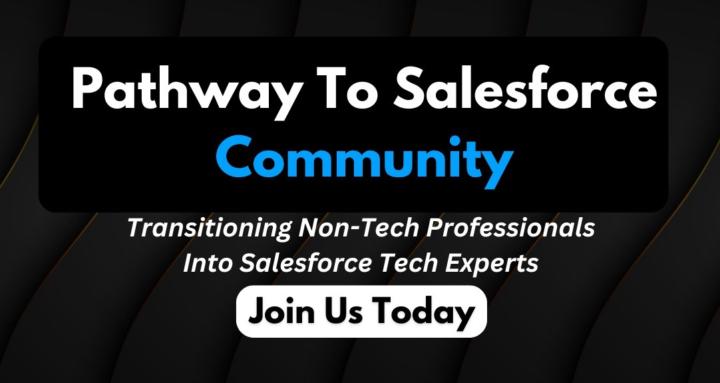Mar 9 (edited) • 🎥 LIVE CLASSES RECORDINGS
🎥 Premium/Standard Session 2, Live Class Recap and Recording
📢 Recap of Our Session – Understanding the Lead Process & Record Types in Salesforce
Hey Team,
In our last session, we focused heavily on understanding the lead process in Salesforce, ensuring that everyone fully grasped how leads enter the system, how they are structured, and the role of record types in managing different lead processes. This was a foundational session meant to clear up any confusion about how businesses use Salesforce to track and manage leads effectively.
MEETING LINK AT THE BUTTOM OF THE PAGE
📌 𝐇𝐨𝐰 𝐋𝐞𝐚𝐝𝐬 𝐄𝐧𝐭𝐞𝐫 𝐒𝐚𝐥𝐞𝐬𝐟𝐨𝐫𝐜𝐞 – 𝐓𝐡𝐞 𝐎𝐫𝐢𝐠𝐢𝐧 𝐨𝐟 𝐚 𝐋𝐞𝐚𝐝
A lead represents a potential customer who has expressed interest in a product or service but is not yet qualified as an opportunity.
Leads typically enter a business through marketing efforts, often tracked in Campaigns.
A lead can be captured through multiple channels, including:
✅ Filling out a form on a company website (this automatically creates a lead in Salesforce)
✅ Signing up for a webinar or event
✅ Clicking on an ad and submitting details via a landing page
✅ Email marketing responses or cold outreach efforts
In Salesforce, companies can embed a lead capture form on their website using Web-to-Lead functionality. This means that when a potential customer fills out their information online, a lead is automatically created in Salesforce. This ensures that businesses never miss out on new prospects.
📌📌 𝐋𝐞𝐚𝐝 𝐏𝐫𝐨𝐜𝐞𝐬𝐬𝐞𝐬 & 𝐑𝐞𝐜𝐨𝐫𝐝 𝐓𝐲𝐩𝐞𝐬
1️⃣ 𝐔𝐧𝐝𝐞𝐫𝐬𝐭𝐚𝐧𝐝𝐢𝐧𝐠 𝐋𝐞𝐚𝐝 𝐏𝐫𝐨𝐜𝐞𝐬𝐬𝐞𝐬
A Lead Process defines the different stages a lead will go through before conversion.
Unlike other objects, Lead Record Types require a Lead Process to be defined.
The lead process dictates the status values available for a lead (e.g., New, Contacted, Qualified, Unqualified).
Businesses may use different lead processes for different sales teams. For example:
Enterprise Leads Process – Leads handled by the enterprise sales team may have a longer qualification cycle.
Retail Leads Process – Leads for retail sales may have a simpler, shorter process.
2️⃣ 𝐑𝐞𝐜𝐨𝐫𝐝 𝐓𝐲𝐩𝐞𝐬 & 𝐏𝐚𝐠𝐞 𝐋𝐚𝐲𝐨𝐮𝐭𝐬
Record Types allow different users to see different versions of the same object based on their role.
For leads, different record types may be used for different business models:
✅ B2B Lead Record Type – Used for businesses selling to other companies, capturing company name, industry, revenue size, and contact details.
✅ B2C Lead Record Type – Used for businesses selling directly to consumers, capturing personal details, location, and preferences.
Each record type can be assigned a different page layout, meaning that:
Enterprise sales reps may see different fields than small business sales reps.
Some sales teams may require additional information on the lead record, while others may only need a simplified version.
3️⃣ 𝐖𝐡𝐲 𝐋𝐞𝐚𝐝 𝐏𝐫𝐨𝐜𝐞𝐬𝐬𝐞𝐬 & 𝐑𝐞𝐜𝐨𝐫𝐝 𝐓𝐲𝐩𝐞𝐬 𝐌𝐚𝐭𝐭𝐞𝐫
Helps standardize how leads are tracked and managed.
Ensures the right teams work with the right data based on their role.
Prevents confusion by structuring leads according to different business requirements.
📌 Key Takeaways & What’s Next
🔹 Understanding how leads enter Salesforce and are structured is critical for Salesforce admins because this is where businesses begin their sales funnel.
🔹 We also clarified that record types in Salesforce impact page layouts and are required for lead processes, unlike other objects where record types may not always require a process.
🔹 Next Session: We will explore Lead Assignment Rules and Automation, ensuring that leads are assigned to the right reps efficiently as they enter Salesforce.
📍 Recording Link: [SESSION LINK HERE]
Stay focused, keep learning, and see you in the next session! 🚀🔥
8
7 comments

skool.com/pathway-to-salesforce
A community to help you transition into tech, master Salesforce skills, and unlock career opportunities with hands-on learning and real-world support.
Powered by





